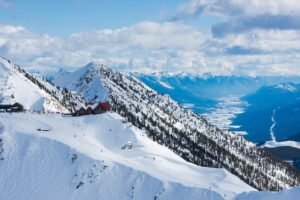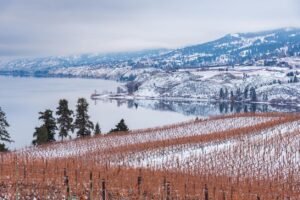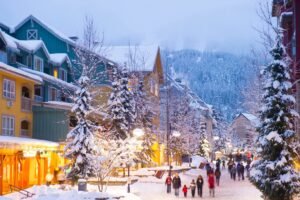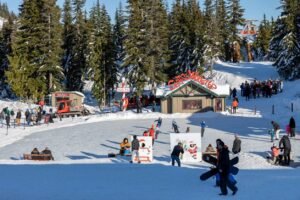Embarking on the Canada Alaska Highway? This guide takes you through key insights for a safe and unforgettable 2,200-kilometer journey from British Columbia to Alaska. You’ll learn the significance of every twist and turn and what to expect en route without spoiling the majestic surprises of the northern stretch.
Key Takeaways
-
The Alaska Highway is a historical and scenic pathway spanning 2,224 km through British Columbia and Alaska that offers travelers the opportunity to follow in the tracks of pioneers, connecting remote communities and revealing natural beauty such as the northern lights.
-
Travelers must prepare thoroughly for a journey on the Alaska Highway, ensuring their vehicle is properly equipped, understanding necessary documentation for border crossing, and being ready for unpredictable weather and wildlife encounters.
-
The route features a variety of must-see stops, including Dawson Creek, Fort Nelson, and Liard River Hot Springs, as well as opportunities for abundant outdoor activities such as wildlife viewing, hiking, and water sports that cater to adventurers of all skill levels.
The Allure of the Alaska Highway

The allure of the Alaska Highway is undeniable. It’s an invitation to traverse a pathway steeped in history, natural splendor, and modern achievements. The highway spans 2,224 km from the fertile lands of British Columbia to the rugged terrains of Alaska, connecting remote communities and opening up the north coast to exploration.
As you cruise along this vital artery, you’re following in the tracks of pioneers who transformed a vast wilderness into a lifeline that today is accessible to adventurers from all over the globe.
The Historical Path
Constructed during the grim days of World War II, the Alaska Highway was a strategic military response to the threat of a Japanese attack on the west coast. The project, as daunting as the Panama Canal, began on March 8, 1942, in conditions that challenged man and machine alike.
The combined efforts of the US and Canadian militaries, private contractors, and the oil and gas industry turned a rugged wilderness trail into a supply route completed under an unfathomable deadline of eight months.
Scenic Splendors

Northern British Columbia greets travelers with:
-
An expansive canvas of wilderness parks
-
A north coast that merges into the Pacific Ocean
-
The Rocky Mountains’ majestic peaks
-
The northern lights dancing across the sky
The beauty along the Alaska Highway is both timeless and diverse.
Each curve in the road reveals panoramic scenes that have long attracted photographers, hikers, and those seeking communion with nature’s untouched wonders.
Modern-Day Marvel
Today’s Alaska Highway is a testament to progress and perseverance. Paved roads ensure a smoother journey than the original builders could have imagined, though adventurers should remain vigilant for rough patches and summer road constructions. Speed limits vary, and conditions can change rapidly—especially in the northern interior—requiring drivers to adjust their pace accordingly and always prioritize safety over speed.
Journey Preparation: What You Need to Know
Embarking on a journey along the Alaska Highway demands thoughtful preparation. It’s not just about plotting points on a map; it’s about readying yourself for the realities of remote travel. From understanding the speed limits to anticipating driving times—which stretch to at least 14 hours in summer and 16 hours in winter from Canada to the Yukon border—planning is paramount.
Social media and specialized resources like The Milepost are invaluable for obtaining up-to-date advice and road conditions.
Gear Up Your Vehicle
Your vehicle is your lifeline on this journey. Before departure, have it thoroughly inspected, with particular attention to fluids, tires, and brakes. Pack emergency tools and supplies, as service stations are few and far between. Learning from others’ experiences, such as breakdowns and tire issues, will help you anticipate potential challenges.
Remember, when traveling with kids and pets, ensure their safety and comfort as well.
Documentation and Border Crossing
Crossing into the United States from the BC portion of the highway requires proper documentation. A passport is typically necessary, though alternatives like a NEXUS card are also accepted. Familiarize yourself with the Western Hemisphere Travel Initiative requirements to ensure a hassle-free border experience.
Research and preparation are your allies here, so don’t leave them behind.
Weather and Wildlife Wisdom
The journey along the Alaska Highway is not without its environmental considerations. Be prepared for winter storm conditions, and bring appropriate gear for common vehicle issues. Weather can be unpredictable, with wildlife crossings and wildfires adding to the adventure.
Ethical wildlife viewing is crucial—approach animals slowly, do not feed them, and avoid using flash photography to ensure their well-being and your safety.
Must-See Stops Along the Alaska Highway
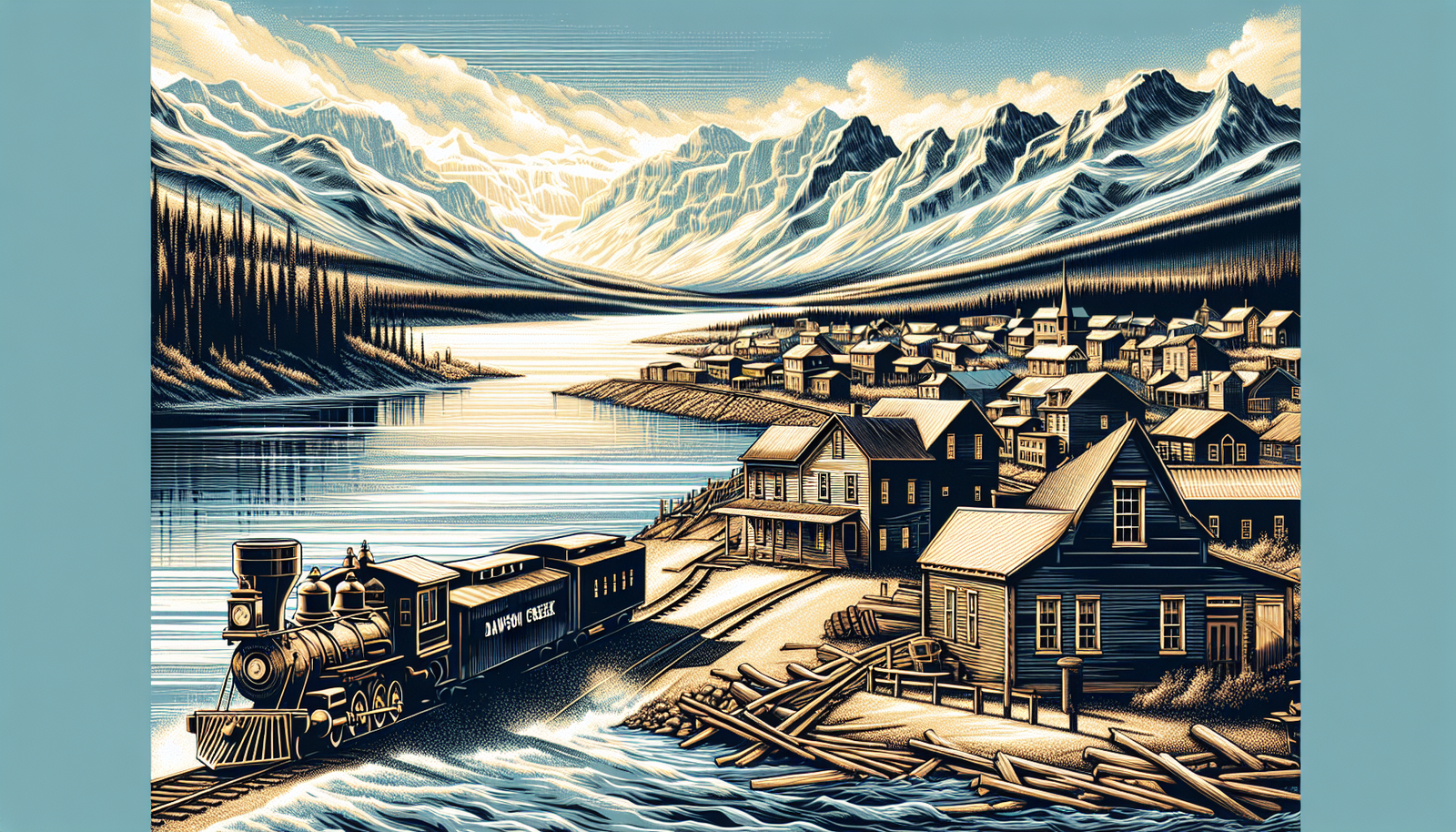
The Alaska Highway is dotted with stops that are rich in history, natural splendor, and cultural significance. From the Mile ‘0’ city of Dawson Creek to the serene Liard River Hot Springs, each location offers unique experiences that are integral to the Northern British Columbia journey.
Grasp the opportunity to delve into the past at heritage attractions, immerse yourself in the wilderness at provincial parks, and indulge in culinary adventures that tantalize the taste buds.
Dawson Creek: Mile Zero
Dawson Creek stands as the celebrated starting point of the Alaska Highway. This city, known for its Gold Rush history and as the highest point of the Yukon River, beckons travelers to explore its Mile Zero Park and the Alaska Highway House—a tribute to the road’s construction and legacy. It’s a place where journeys begin and stories unfold.
Fort Nelson Area: Gateway to the Wilderness
Fort Nelson, located near Fort St, is more than a refueling stop—it’s a portal to the vast wilderness of Northern BC and the Yukon Territory. Here, the Fort Nelson Heritage Museum captures the essence of the region’s transportation history.
As travelers venture north, they are treated to the awe-inspiring views of Muncho Lake and Summit Pass, marking the transition from the northern interior to the wilderness beyond.
Liard River Hot Springs: Natural Oasis
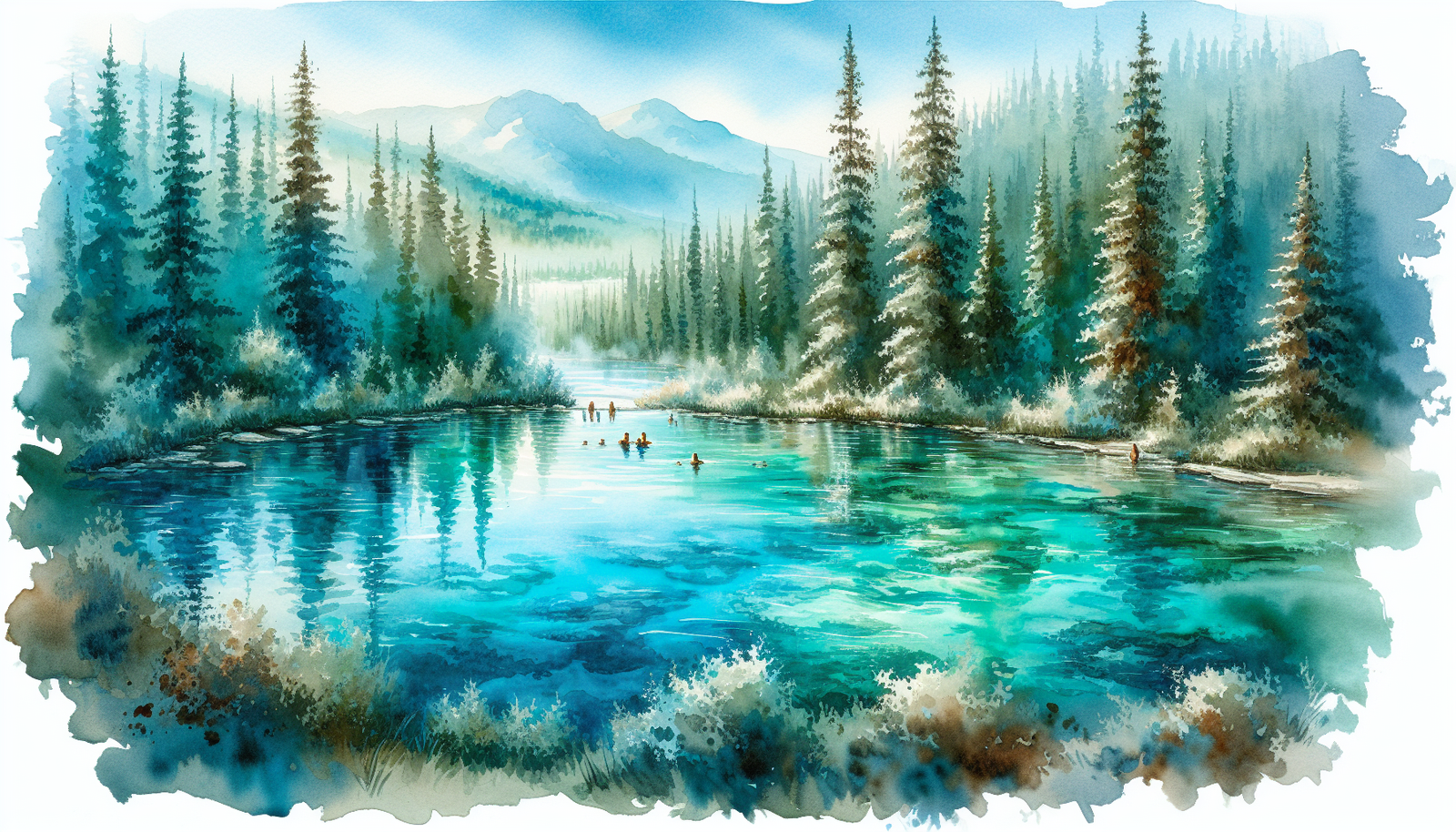
The Liard River Hot Springs Provincial Park, located in the beautiful Peace River Country, offers a sanctuary for those seeking respite from the road. Established in 1957, the park’s hot springs are a natural phenomenon, providing a tranquil and therapeutic atmosphere for relaxation and rejuvenation in the Peace River Valley.
It’s a place where the weariness of travel melts away in the warm embrace of nature.
Navigating the Northern Hospitality
Northern British Columbia’s charm extends beyond its landscapes to the heart of its communities. Here, you’ll find a blend of peace, quiet, and the invigorating spirit of the north. Towns like McBride and Dease Lake embody the local support and community spirit, while Tlell stands as the cultural beacon of the Islands’ art community, nestled within the captivating Queen Charlotte Islands.
From cafes and restaurants to theaters and recreation centers, Northern B.C. offers a plethora of urban amenities that complement its natural attractions, including bc parks.
Local Businesses and Accommodations
Businesses in Northern B.C. reflect the region’s spirit of enterprise and northern hospitality. Accommodations range from cozy bed and breakfasts to full-service hotels, catering to the needs of weary travelers.
Unique shops and local businesses add to the region’s character, reflecting the resilience and resourcefulness of its coastal communities residents.
Dining and Northern Cuisine
Sampling northern cuisine is an essential part of the Alaska Highway experience. At Delta Meat & Sausage, located at about Mile 1413, travelers can indulge in authentic local sausage and other Alaskan flavors, representing a culinary journey as memorable as the road itself. The highway’s route is peppered with opportunities to taste the unique and hearty meals that define the north.
Cultural Encounters
The Canada Alaska Highway is also a path of cultural discovery. In Whitehorse, you can delve into the Klondike Gold Rush’s history at the MacBride Museum or explore the ancient world at the Yukon Beringia Interpretive Centre.
The Village of Daajing Giids offers insights into Haida Gwaii’s local heritage, making every stop an opportunity to connect with the region’s rich history and indigenous culture.
Outdoor Adventures in the North
The northern expanse of British Columbia and the Yukon beckons with boundless opportunities for outdoor recreation. Whether it’s hiking through boreal forests, river rafting on the Yukon River, or horseback riding in the shadow of the Canadian Rockies, the Alaska Highway is your gateway to adventure. And as the seasons change, so too do the activities, from summer fishing to winter cross-country skiing, ensuring that every visit offers a new way to experience the great outdoors.
Wildlife Viewing and Photography

The vast wilderness surrounding the Alaska Highway is a haven for wildlife viewing and photography. Travelers must remain vigilant for moose and caribou, especially on icy bridges and overpasses. Ethical viewing habits, such as wearing natural colors and avoiding scents, enhance the experience.
The Yukon Wildlife Preserve and the Tachäl Dhäl area provide exceptional opportunities to observe mammals and birds in their natural habitats, while Liard River Hot Springs Park offers glimpses into the diverse local fauna.
Hiking Trails and Parks
Hiking trails along the Alaska Highway cater to all skill levels, offering everything from casual strolls to challenging treks. The Rancheria River valley waterfalls and the Millennium Trail in Whitehorse provide stunning views of the Yukon River, while Kluane National Park & Reserve invites more adventurous spirits to explore its rugged terrain. These parks and trails offer a chance to connect with the land and witness the natural beauty that makes this region truly remarkable.
Water Sports and Fishing
For those drawn to the lure of the water, the Alaska Highway doesn’t disappoint. Rivers and lakes along the route are prime spots for fishing and water sports. Anglers can pursue grayling and lake trout near the Upper Liard River bridge, while Teslin provides a picturesque setting for trout fishing and a variety of other water-based activities.
These experiences offer a refreshing contrast to the road travel and a chance to engage with the wilderness in a whole new way.
Living the Dream: Stories from the Road
The Alaska Highway is more than a route—it’s a narrative woven from the experiences of those who travel its length. Through tales of adventure, family bonding, and personal growth, the highway reveals itself not just as a physical passage but as a journey of the soul.
It’s where travelers find their rhythm in the vastness of the north, overcoming challenges and forging memories that resonate with the pioneering spirit of the route.
Adventurous Souls
Adventurous souls find their mettle tested on the Alaska Highway. Mechanical setbacks, such as a generator failure or a burnt fan belt, become part of the fabric of an unforgettable journey. These moments, while trying, shape the stories of resilience and adventure that travelers carry with them long after the journey ends.
Family Road Trippers
Families embarking on the Alaska Highway find it to be a canvas for creating shared memories. The experiences here, from wildlife sightings to nights spent around a campfire, become threads in the tapestry of familial bonds.
The journey is not just a passage through the wilderness but a collective adventure that brings loved ones closer together.
Solo Wanderers
Solo wanderers on the Alaska Highway encounter a profound sense of freedom. With every mile, they carve out moments of self-discovery against the backdrop of the surrounding wilderness. From changing tires on gravel roads to relying on the kindness of strangers, these experiences underscore the transformative power of the solo journey.
Planning Your Itinerary
Crafting the perfect itinerary for the Alaska Highway adventure is an art. Whether you’re looking to spend a few days or a couple of weeks exploring the northern treasures, there’s a journey to fit every schedule and interest.
From short excursions to extended voyages, each traveler can design a route that caters to their sense of adventure and curiosity.
Short Excursions
Short on time but still craving the thrill of the north? The Stewart-Cassiar Highway offers an alternate, less-traveled route to the Yukon or Alaska, providing a condensed yet equally scenic adventure.
For a quick taste of the wilderness, Denali National Park’s shuttle services enable visitors to witness the park’s highlights in a timely manner.
Extended Voyages
For those with time to spare, extended voyages along the Alaska Highway can lead to a deeper connection with the north’s vast wilderness. Side routes like the Stewart-Cassiar Highway (Highway 37) add layers to the experience, allowing for more leisurely exploration and the chance to soak in the solitude that only the north can offer.
Seasonal Variations
Seasonal variations on the Alaska Highway can greatly influence your travel plans. Summer provides longer daylight hours and easy access to most services, while the winter season offers a starkly different adventure with the chance to witness the mesmerizing northern lights.
Travelers should tailor their itineraries to the season, taking advantage of what each has to offer. Here are some suggestions:
-
Summer: Enjoy the vibrant wildlife and open attractions.
-
Fall: Experience the beautiful foliage and harvest festivals.
-
Winter: Embrace the serene beauty and be cautious with winter travel.
-
Spring: Witness the blooming flowers and enjoy outdoor activities.
Summary
The Alaska Highway is more than a stretch of pavement cutting through the wilderness—it’s a journey through history, nature, and culture. From the rugged historical path to the modern-day highway, preparation tips, and the enchanting northern hospitality, this road offers an adventure like no other. Whether you’re seeking solitude, family bonding, or a challenge, the Alaska Highway promises an unforgettable experience. Let the stories from the road inspire you, and start planning your adventure today, for the highway is not just a destination; it’s the beginning of countless tales waiting to be written.
Frequently Asked Questions
Is the Alaska Highway dangerous to drive?
No, the Alaska Highway is not considered dangerous to drive. However, drivers should stay alert for rough patches and seasonal road conditions to prioritize safety.
What are the must-see stops along the Alaska Highway?
Be sure to visit Dawson Creek, the official starting point; Fort Nelson, a gateway to the northern wilderness; and Liard River Hot Springs, a natural oasis for relaxation. These are must-see stops along the Alaska Highway.
What kind of wildlife might I see along the Alaska Highway?
You can expect to see a variety of wildlife along the Alaska Highway, including moose, caribou, Dall sheep, various bird species, and unique fish like those found at Liard River Hot Springs. Enjoy your journey!
How long does it take to drive the Alaska Highway?
Plan for at least 14 hours in the summer and 16 hours in the winter to reach the Yukon border from Canada when driving the Alaska Highway. Variances in driving times should be considered.
What documentation do I need to cross the border into the United States?
To cross the border into the United States, you will need proper documentation like a valid passport or a NEXUS card. Be sure to check the latest requirements under the Western Hemisphere Travel Initiative before your trip.


